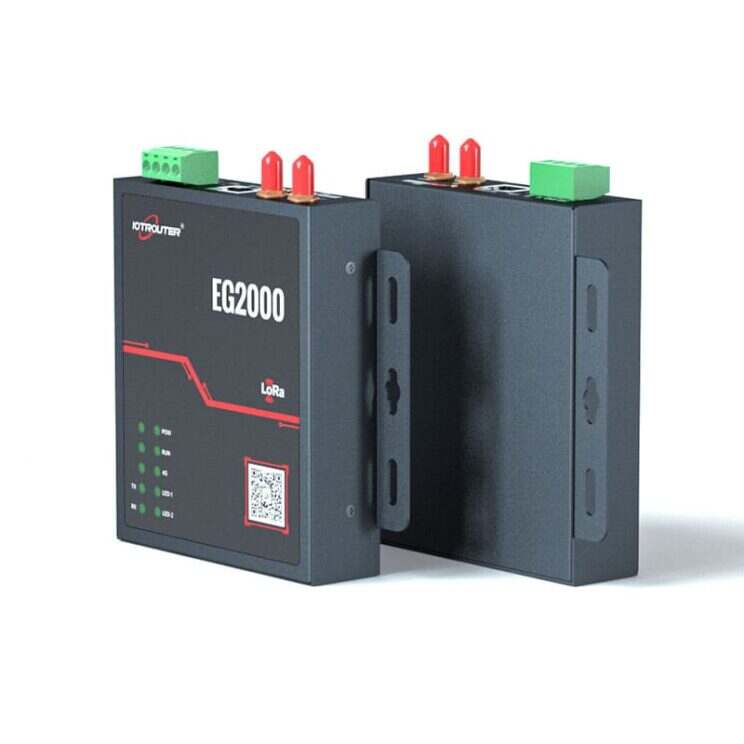1. The RS485 interface is a serial communication protocol that enables multi-address communication, allowing multiple devices to communicate over a single network.
2. To communicate with multiple RS485 ports, you first need to set the main communication port. Then, assign different communication addresses to each of the other ports and configure the communication timing. This setup allows you to build an effective RS485 bus communication network.

How to achieve multiple RS485 Interface communication
RS485 adopts differential signal negative logic, +2V~+6V means “0”, – 6V~- 2V means “1”, RS485 has two-wire and four-wire wiring, four-wire is a full-duplex communication mode, two-wire is a half-duplex communication mode. RS485 interface has two-wire and four-wire wiring.
RS485 and RS232 are based on the same serial communication interface, data sending and receiving operations are the same, so the use of the same WinCE underlying driver. But they are in the actual application of the communication mode has a big difference, RS232 interface for full-duplex data communication mode. While the RS485 interfaces for half-duplex data communication mode, data can not be sent and received at the same time, in order to ensure that the data sent and received without conflict, the hardware is through the direction of switching to achieve, and accordingly also requires the software must be sent and received in the process of strict separation.
RS485 interface composed of half-duplex network, generally two-wire system (formerly four-wire connection, can only achieve point-to-point communication, now rarely used), more shielded twisted-pair cable transmission. In the RS485 communication network is generally used in the master-slave communication mode, that is, a host with multiple slaves.
In many cases, connecting the RS-485 communication link is simply a pair of twisted-pair cable will be connected to the various interfaces “A”, “B” end. RS485 interface connector using DB-9 9-core plug seat, and intelligent terminal RS485 interface using DB-9 (now rarely used), mostly shielded twisted-pair cable transmission. The RS485 interface connector adopts DB-9 9-core plug holder, and the RS485 interface with intelligent terminal adopts DB-9 (hole), and the RS485 interface with keyboard adopts DB-9 (pin).
Warum RS485 für eine Multi-Host-Steuerung?
RS485 uses a single-duplex mode of operation, in order to prevent competition on the bus generally can only have a host, and the use of a host to ask, a slave to answer the way. But sometimes, we do need more than one host to monitor RS485 devices, such as the need for three computers can monitor the same few RS485 devices, and it is best to share the RS485 bus.
Although this problem is often encountered in practice, but there is no good solution. The difficulty lies in the fact that the 2 hosts are completely independent, then they do not have a coordination mechanism, if the 2 hosts at the same time to ask the slave device, then it is bound to cause data conflicts on the RS485 bus.
RS485 Verdrahtungsspezifikation
1. RS485-Signalleitung kann nicht mit der Stromleitung verlegt werden. In der tatsächlichen Konstruktion, aufgrund der Ausrichtung sind durch die Pipeline, die Bau-Seite manchmal für die Bequemlichkeit, direkte RS485-Signalleitung und Stromleitung miteinander verbunden, aufgrund der starken Leistung hat ein starkes elektromagnetisches Signal an die schwache Leistung Störungen, die zu 485 Signal Instabilität führt, was zu instabilen Kommunikation.
2. Für die RS485-Signalleitung können abgeschirmte oder ungeschirmte Kabel verwendet werden. Da das RS485-Signal im Differenzialmodus übertragen wird, d. h. durch die Spannungsdifferenz zwischen RS485+ und RS485- als Signalübertragung.

Richtige Verdrahtung für die RS485-Kommunikation
Ideal für Twisted-Pair-Drähte: Halbduplex zwei Drähte sind am besten in einem Paar von Twisted-Pair-Drähte verwendet werden, so dass die beiden Drähte verdrillt sind, plus die Interferenz-Ebene auf den beiden Drähten, um die Anti-Jamming-Effekt der Kündigung zu erreichen. Full-Duplex beim Empfang von zwei Zeilen mit einem Paar, senden Sie zwei Zeilen mit einem anderen Paar von RS485 hat keine Stromübertragung Anforderungen, so dass die Drahtdurchmesser Anforderungen sind nicht hoch.
In the actual project, usually procured outdoor waterproof twisted pair wire to ensure the protection performance of the line. However, some engineers will use RVV cable, which is also possible, but the anti-interference to be worse. So that there are engineers using RVVP cable (with shielding), this is not good, because the increase in capacitance between the lines will affect the quality of transmission, the need to reduce the Baudrate of transmission.
Baudrate Einstellungen und Kabellänge (einschließlich der Gesamtlänge der Verzweigung) ist eine gewisse Korrespondenz, desto länger die Leitung, desto niedriger sollte die Baudrate zu mehr stabil eingestellt werden.
Egal, welche Art von Kabel, so weit wie möglich mit dem Bus-Architektur, reduzieren Sie die Stern-Verbindung, Zweigleitung so kurz wie möglich, so weit wie möglich mit der Daisy-Chain-Verbindung, das heißt, der Bus zum ersten Knoten, und springen Sie dann auf den nächsten Knoten.
Nicht mit der Zweigleitung des Geräts verbunden ist am besten aus dem Bus entfernt, sonst ist es leicht zu bilden Störungen. Die meisten unterminiert Ende des Busses, wenn der Empfang des Signals ist schlecht, können Sie 120 Ohm Linie Unresistor über die Signalleitung an beiden Enden hinzufügen. Zwischengeräte fügen Sie nicht hinzu, da sonst der Leitungsverlust zunimmt und die Anzahl der Geräte und die Entfernung verringert wird.
Die RS485-Chips der verschiedenen Geräte sind in der Regel unterschiedlich, es gibt verschiedene Lasttypen von Chips, die in der Regel nicht direkt sichtbar für Ingenieure sind. Das heißt also, dass die maximale Anzahl von Geräten an verschiedene Geräte auf dem Bus angeschlossen ist nicht sicher, die gleiche Anzahl von Geräten angeschlossen, um die Gerätebeschreibung Anforderungen auf der Linie zu sehen.
Schlussfolgerung
RS485 interface is an essential part of automation and communication systems, enabling multi-address communication and efficient data exchange. Its differential signaling and half-duplex capabilities make it ideal for reliable connections between various devices. Users can optimize RS485 to improve system performance and stability.


